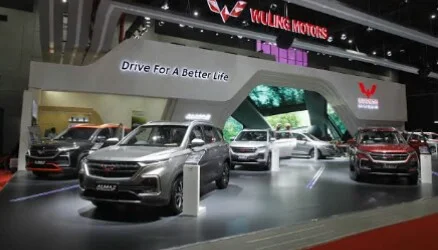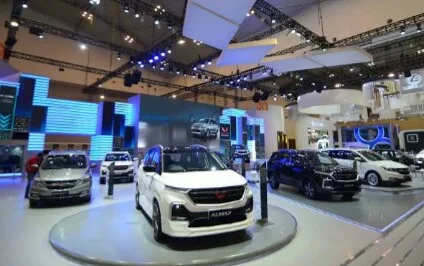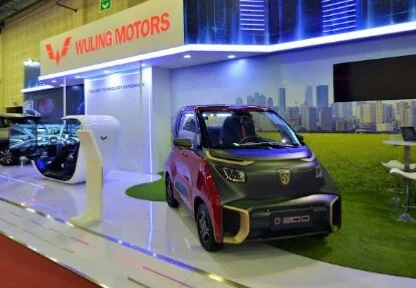Electric Vehicle
Introduction Wireless Charging Revolutionizes for Electric Vehicle
Electric vehicles (EVs) continue to gain momentum in the transportation sector, advancements in charging technology are playing a pivotal role in shaping their future.
Wireless charging, also known as inductive charging, has emerged as a game-changing innovation that eliminates the need for physical connections and cables.
By allowing EVs to charge simply by parking over a charging pad, wireless charging is revolutionizing the EV industry and paving the way for a more convenient and efficient charging experience. In this article, we will explore the potential and impact of wireless charging technology on electric vehicles.
Wireless Charging Revolutionizes Electric Vehicles
| Feature | Wireless Charging | Wired Charging |
|---|---|---|
| Convenience | Simply park over a charging pad. No need to handle cables or plugs. | Requires plugging in a cable, often with limited reach. |
| Speed | Typically slower than wired charging, especially for higher-capacity batteries. | Can achieve faster charging speeds, especially with advanced technologies like DC fast charging. |
| Accessibility | Can be installed in various locations, including parking lots, homes, and public spaces. | Requires physical infrastructure for charging stations. |
| Safety | Minimizes the risk of electric shock or cable damage. | Potential for cable damage or accidents. |
| User Experience | Seamless and effortless charging experience. | Can be cumbersome, especially in tight spaces or inclement weather. |
| Cost | Initial installation costs may be higher, but long-term savings can be realized through reduced maintenance and increased convenience. | Lower initial costs but ongoing expenses for electricity and cable replacements. |
| Future Potential | Dynamic wireless charging and in-motion charging could revolutionize the EV industry. | Limited scope for significant advancements beyond existing technologies. |
Outlook Wireless Charging Revolutionizes for Electric Vehicle
How Wireless Charging Works
Wireless charging utilizes electromagnetic fields to transfer energy from a charging pad embedded in the ground to a receiver installed in the EV.
The process involves using an induction coil in the charging pad to generate a magnetic field, which induces an electrical current in the receiver coil of the vehicle. This wireless transfer of energy eliminates the need for physical contact or manual plugging, making charging as easy as parking your vehicle over the charging pad.
Convenience and Simplicity
Wireless charging offers unparalleled convenience and simplicity for EV owners. Instead of maneuvering cables and connectors, drivers can effortlessly park their vehicles over a charging pad, and the charging process begins automatically.
This user-friendly approach simplifies the charging experience, making it more accessible for a wide range of users, including those with limited mobility or physical constraints. Wireless charging eliminates the hassle of manual plugging and enhances the overall convenience of owning an electric vehicle.
Seamless Integration into Infrastructure
Wireless charging technology can be seamlessly integrated into existing infrastructure, including parking lots, homes, and public charging stations. By embedding charging pads discreetly into the ground, charging stations can blend into their surroundings without disrupting the visual aesthetics of the environment.
This integration allows for widespread deployment of wireless charging infrastructure, making it a viable solution for both residential and commercial settings.
Increased Efficiency and Versatility
Wireless charging offers improved charging efficiency and flexibility. The technology can be designed to automatically align the charging pad with the receiver in the EV, ensuring optimal charging performance. Additionally, wireless charging systems can be configured to support various power levels, accommodating different vehicle models and battery capacities. With wireless charging, EV owners can achieve efficient and reliable charging without the constraints of physical connectors or compatibility concerns.
Future Opportunities and Scalability
Wireless charging presents exciting opportunities for future innovation and scalability. As the technology matures, advancements in charging efficiency, range, and charging speeds can be expected. Integration with smart grids and renewable energy sources can further enhance the sustainability of wireless charging infrastructure. Additionally, wireless charging can be deployed in dynamic charging scenarios, such as charging while driving or inductive charging lanes, which could potentially eliminate the need for frequent charging stops during long-distance journeys.
Wireless Charging Revolutionizes Electric Vehicle Technology
Wireless charging technology was already making strides in various fields, including electric vehicles (EVs).
Wireless charging, also known as inductive charging or wireless power transfer, involves transferring electrical energy from a charging station to an EV without the need for physical cables.
This technology aims to simplify the charging process for electric vehicles and increase their adoption by reducing charging-related inconveniences.
The potential benefits of wireless charging for EVs include:
1. Convenience: Wireless charging eliminates the need for physically plugging and unplugging cables, making the charging process more convenient and user-friendly. It can be particularly useful for autonomous vehicles that can align themselves with charging stations without human intervention.
2. Improved Safety: By removing the physical connection between the charging station and the EV, the risk of electrical hazards and tripping accidents is reduced.
3. Increased Charging Efficiency: Wireless charging systems have evolved to become more efficient, leading to faster charging times and higher power transfer rates. This can contribute to improved overall charging infrastructure and user experience.
4. Enhanced Durability: With no physical connectors to wear out, the charging infrastructure may have increased longevity, reducing maintenance costs over time.
5. Better Aesthetics and Space Utilization: Wireless charging systems can be integrated into parking lots, roadways, or garage floors, maintaining the aesthetics of the environment and optimizing space usage.
While wireless charging technology was already showing promise, its widespread adoption in the electric vehicle industry was subject to various factors, including standardization, cost-effectiveness, and compatibility across different EV models. As of my last update, some automakers were actively exploring and implementing wireless charging solutions in their vehicles, but the technology had not yet fully revolutionized the electric vehicle industry.
Manufacture Company for Wireless Charging Electric Vehicle
Multiple companies and research institutions were actively working on wireless charging technology for electric vehicles.
Some of the key players in this field included:
1. Qualcomm Halo: Qualcomm Halo was one of the leading companies in wireless charging for electric vehicles. They developed a technology called Qualcomm Halo Wireless Electric Vehicle Charging (WEVC) system, which used resonant magnetic induction to transfer power between the charging pad on the ground and the vehicle's receiver pad.
2. WiTricity: WiTricity is another prominent player in wireless charging technology. They developed magnetic resonance-based wireless charging systems that allow for efficient power transfer over larger gaps between the charging pad and the vehicle's receiver.
3. Plugless (by Evatran Group): Plugless was a brand of Evatran Group that specialized in wireless charging systems for electric vehicles. They offered aftermarket wireless charging solutions for popular electric car models.
4. BMW: BMW was actively researching and implementing wireless charging technology in some of its electric vehicle models. They were working on a system that allowed BMW EVs to be charged wirelessly when parked over a special ground pad.
5. Hyundai/Kia: Hyundai and its sister company Kia were also investing in wireless charging technology for their electric vehicles. They were exploring ways to incorporate wireless charging capabilities into their upcoming EV models.
6. Tesla: While Tesla was primarily focusing on its proprietary plug-in charging network, there were discussions and speculations about the company potentially exploring wireless charging technology in the future.
Wireless charging for electric vehicles were subject to various challenges, including standardization, cost-effectiveness, and compatibility.
Conclusion Wireless Charging Revolutionizes for Electric Vehicle
Wireless charging technology is transforming the EV industry by providing a more convenient, efficient, and user-friendly charging experience.
Its seamless integration into infrastructure, coupled with the elimination of physical connections, enhances the appeal and accessibility of electric vehicles.
Wireless charging continues to evolve and gain widespread adoption, it has the potential to revolutionize how we power our vehicles and contribute to the growth of a sustainable transportation ecosystem.
With wireless charging, the future of electric mobility is moving towards a wire-free world, where charging is as effortless as parking your vehicle.




